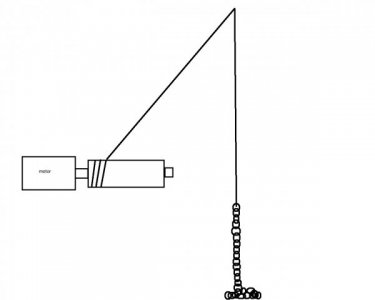- Joined
- Jan 2, 2014
- Messages
- 8,854
Hi jmarkwolf,
Lots of great input above. I also agree that the keys are rigidity and cutting speed.
Both will be impacted by what diameter you are cutting on this disc.
The outer diameter is further from the supporting axle and is also moving faster.
With respect to the latter, for me it always helps me to think about the cutting speed in surface feet per min (sfpm). I always look up the recommended cutting speeds in sfpm for the material and tool I am using. Then use the diameter (of the work on the lathe or cutter on the mill) to determine RPM to run the machine.
sfpm ~= rpm x dia.(in inches) /4
So, for the same rpm, if you double the diameter you also double the cutting speed in sfpm.
For facing large diameter work, use the rpm calculated at the outside dia.
Pure speculation as I have never done it, but this might be a suitable project for some kind of electric/magnetic braking system. You could remove any changes in mechanical surface finish of brake pad and disc completely from the equation.
Good Luck!
-brino
Lots of great input above. I also agree that the keys are rigidity and cutting speed.
Both will be impacted by what diameter you are cutting on this disc.
The outer diameter is further from the supporting axle and is also moving faster.
With respect to the latter, for me it always helps me to think about the cutting speed in surface feet per min (sfpm). I always look up the recommended cutting speeds in sfpm for the material and tool I am using. Then use the diameter (of the work on the lathe or cutter on the mill) to determine RPM to run the machine.
sfpm ~= rpm x dia.(in inches) /4
So, for the same rpm, if you double the diameter you also double the cutting speed in sfpm.
For facing large diameter work, use the rpm calculated at the outside dia.
Pure speculation as I have never done it, but this might be a suitable project for some kind of electric/magnetic braking system. You could remove any changes in mechanical surface finish of brake pad and disc completely from the equation.
Good Luck!
-brino


